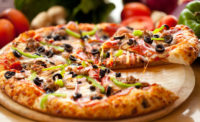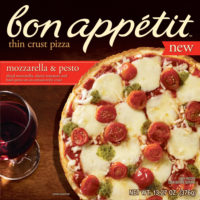Frozen foods are on the upswing after years of flat or declining growth. The trend is visible in research like “The Power of Frozen,” a report issued by the American Frozen Food Institute (AFFI), Arlington, Va., and Food Marketing Institute (FMI), Arlington, Va.
The shift in the culture at large is where consumers are looking at fresh a little differently than they did in the past. In fact, the public is starting to appreciate that frozen foods can “lock in” nutrients better than produce trucked across the country.
Refrigerated and frozen foods are enjoying some well-deserved momentum. However, it would be a mistake for retailers and manufacturers to sit back and savor the moment. Now is the time to pounce on these emerging opportunities—and driving store-brand innovation is one of the best ways to go about it.
Historically, retailers and manufacturers in this category have not exactly pushed the envelope on creativity. This is partly why many consumers still associate frozen foods with unhealthy “dinners” and fast food licencing agreements. Meanwhile, on the private label side, the prevalence of utilitarian fruit blends, vegetable medleys and the like has led to relatively low consumer expectations of refrigerated and frozen foods. With a few exceptions, many companies still rely on minor tweaks—a new salted-caramel ice cream, say, or pizza with a self-rising crust—as stand-ins for innovation.
Legacy store brand strategies are all about ceding innovation to the national consumer packaged goods (CPGs), but if refrigerated and frozen foods decision-makers continue to play follow-the-leader, they’ll miss a huge opportunity.
Grocery store operators understand that today’s consumers want healthy options or meal solutions for every part of the day. However, these chains also see the importance of making sure their store brands are fun, interesting and convenient.
Store brands are growing robustly in large part because of these more creative approaches. According to the “2019 Grocery Tech Trends Study,” presented by RIS, Newark, N.J., 81% of grocers recorded higher private label sales over the past five years, and 42% reported “major increases” during the same time period.
Already, the refrigerated and frozen category is pivoting to respond to changing eating habits. Processors could spur further innovation by exploring new territory and addressing the consumer desire for fast and healthy, or decadant and tasty options. There is broad opportunity, in particular, to surprise and delight shoppers with offbeat, humorous and original product lines in fast-growing areas such as ethnic foods and breakfast replacements.
Now that the category is making progress, the goal should be to use store brands to generate even more buzz. Collaborative partnerships between parties can propel strategies that get the job done. The growth of store brands proves that such commitments drive sales and loyalty over the long term.








